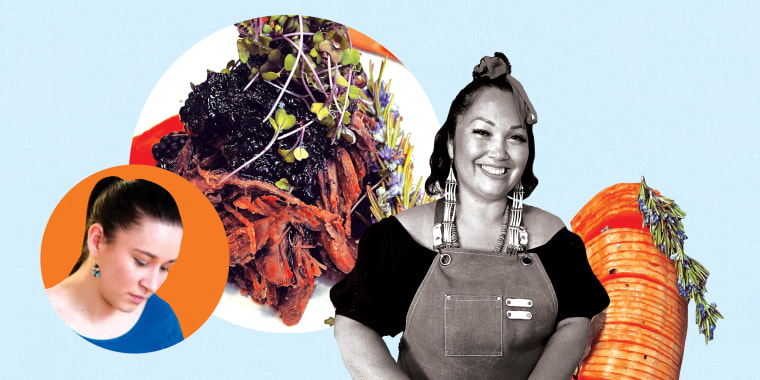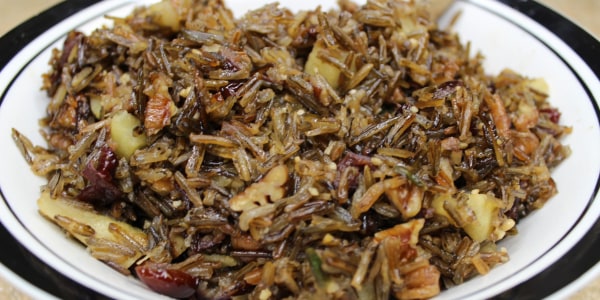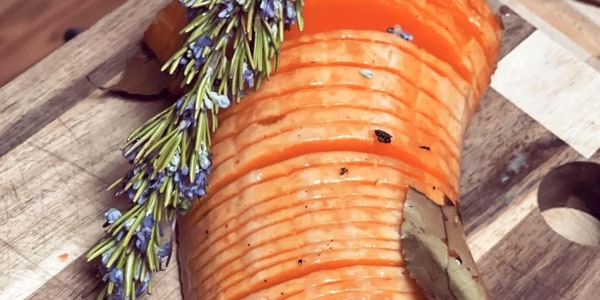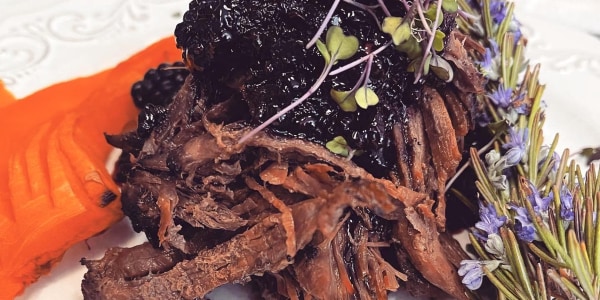For many Indigenous chefs, food goes beyond basic sustenance — it's about healing and fighting for equity. In honor of Native American Heritage Month, TODAY Food chatted with a few Indigenous chefs about their favorite fall recipes and why they hold personal and cultural significance.
Mariah Gladstone, Blackfeet and Cherokee, founder of "Indigikitchen," says she uses food to resist colonialization by living off the earth in these modern times. So often, healthy ingredients are still processed or filled with preservatives. But Gladstone says, "Indigenous foods like wild game, berries, corn, squash, and wild rice are far easier for the digestive system to process than wheat flour, dairy, and sugar."
Kimberly Tilsen-Brave Heart, Oglala Lakota, co-owner of Et-i-quette Catering Company in Rapid City, South Dakota, uses food and her entrepreneurial background to empower women and youth. She focuses on finding peace and purpose along the journey of healing from cultural trauma through authentic meals and mentorship.
Rich Francis, Haudenosaunee and Tetlit Gwich’in, owner of The Seventh Fire Hospitality Group, prides himself in using cooking to aid decolonization. Through his dinner series and cooking workshops for Indigenous youth, he aims to change what people think of as Indigenous food, and believes food is an accessible entry point into the issues Indigenous people face, including diabetes, obesity and food sovereignty.
Mariah Gladstone: Wild Rice Pilaf
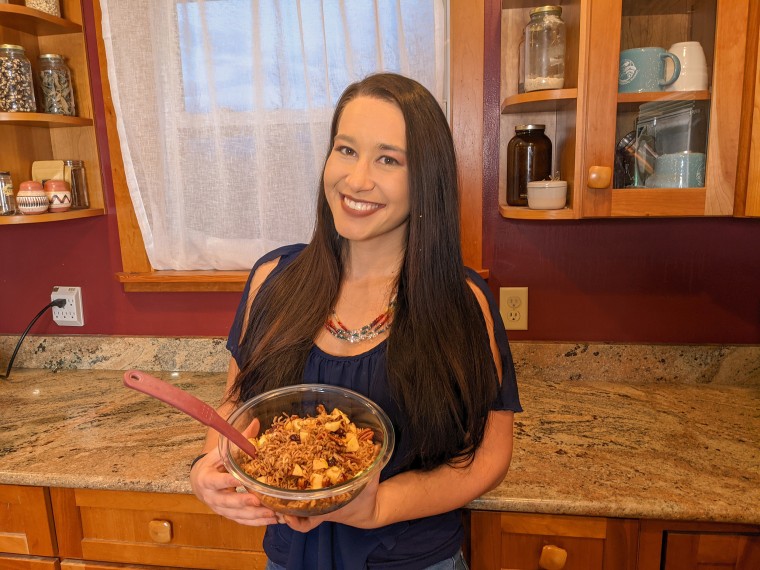
Gladstone said wild rice has generational significance in Native American cultures.
"The wild rice pilaf recipe is one of my favorites for the fall (and a great addition to any harvest meal)," she said. "Wild rice (Zizania palustris) is actually a grass that grows in wetlands around the Great Lakes region. It is traditionally harvested by a two-person team in a canoe. One person propels the boat using a long pole that pushes off the bottom of the pond while the other shakes the grass seeds into the bottom of the canoe. Inevitably, some of the seeds fall into the water and reseed themselves, which helps future generations of wild rice and ricers."
"When buying wild rice, look for 'hand-harvested' wild rice," advised Gladstone. "The cooking process typically uses much more liquid than white or brown rice to cook; for this recipe we are actually using a 50:50 ratio of bone broth and water and adding dried cranberries to the mix as they will rehydrate themselves. The bone broth and apple juice add nutrients, flavor and sweetness to the dish. We pan-toast pecans (though you can substitute pepitas or sunflower seeds for a nut-free variation) and apples.
"The variety of Indigenous ingredients reminds us of the gifts of the land and grants us a way to share those with our families. My family often mixed leftover wild rice into the next day's pancake mix; this recipe works perfect to mix in as well (though if you plan on doing that, consider omitting the black pepper and garlic). Cranberry apple pecan wild rice pancakes are sure to delight everyone."
Kimberly Tilsen-Brave Heart: Hassleback Roasted Squash and Slow-Roasted Buffalo
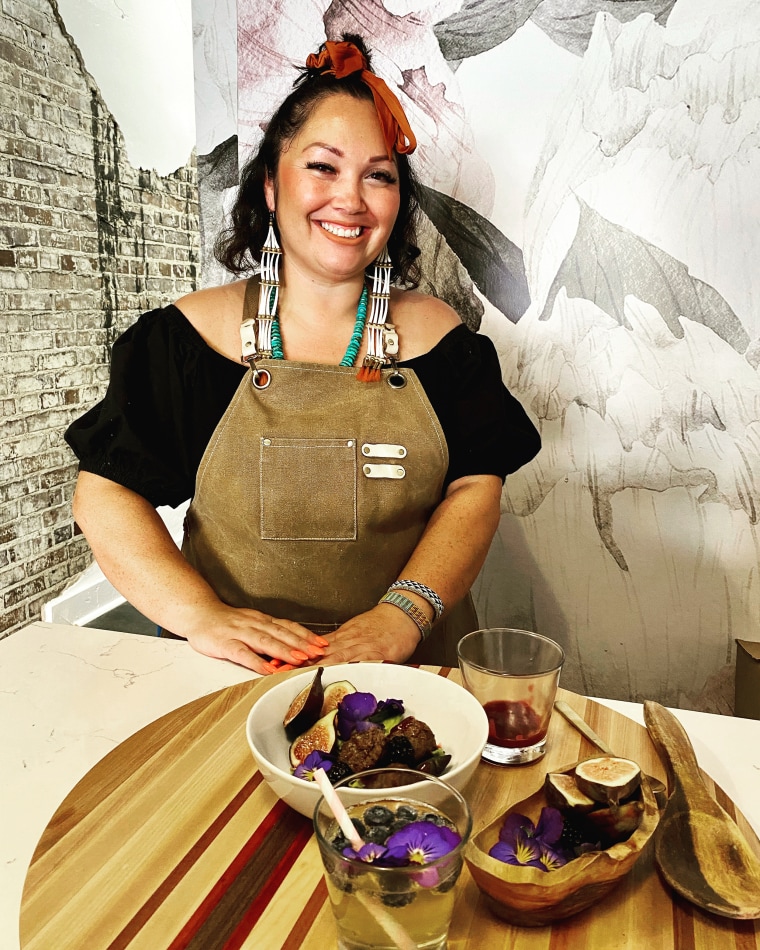
Tilsen-Brave Heart explained why squash is a integral vegetable to Native American communities.
"These recipes resonate with me because it reminds me of my childhood," she said. "Squash was a staple growing up, we ate it at nearly every meal in a variety of ways. This is just a sophisticated twist to add to any meal."
"Buffalo was the original center of the Lakota people's diet, it sustained us all year round and is considered medicine for our bodies, it gives us power and strength to sustain our body, mind and spirit," Tilsen-Brave Heart continued. "Squash and buffalo are the traditional staples of the Lakota diet. They are not just ingredients, they are our connection to our history, culture and land. By utilizing these ingredients, we honor ourselves with the traditional medicine they bring to our bodies and spirits. When I prepare these foods, it is a healing experience for myself and for those that get to consume it. Both of these recipes literally provide energy to me."
Rich Francis: Moose Nose Chop
Francis spoke about the cultural significance of his moose nose chop dish.
"Moose, in Indigenous culture, is highly regarded and used in ceremonies from east to west coast on Turtle Island. Fall is the time to harvest moose but the nose is a delicacy reserved for elders but if you're lucky to get one, just go with it," he said.
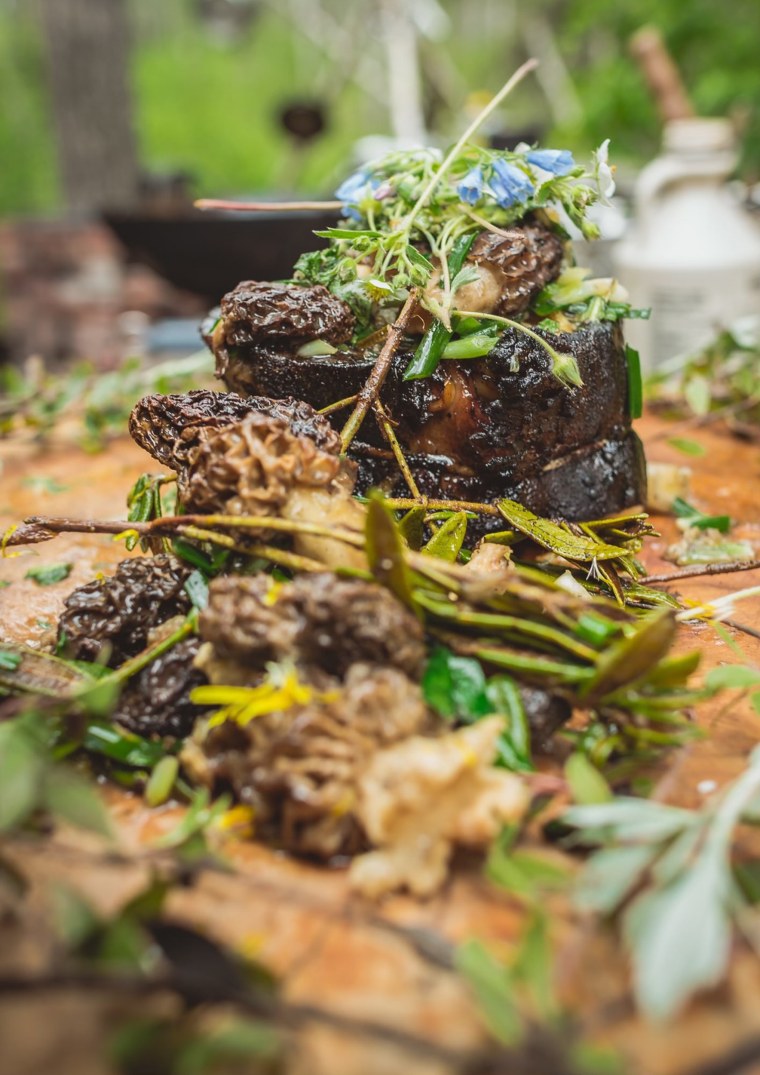
"It’s a labour-intensive dish that requires multiple steps for its success but the process is the goal in this entire dish. If you like textures like fat, unctuous meat and cartilage, then this is for you. The hair is singed over a fire and scraped to the skin layer. This process is where the flavour begins. It’s cooked or braised for about 5 to 6 hours, then it’s rolled, trussed, cooled and cut into chops or steaks and grilled as you would a steak. Absolutely delicious. Indigenous peoples have been celebrating this preparation for hundreds of years."
